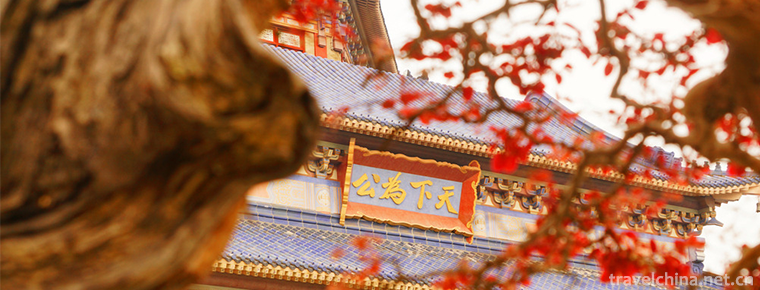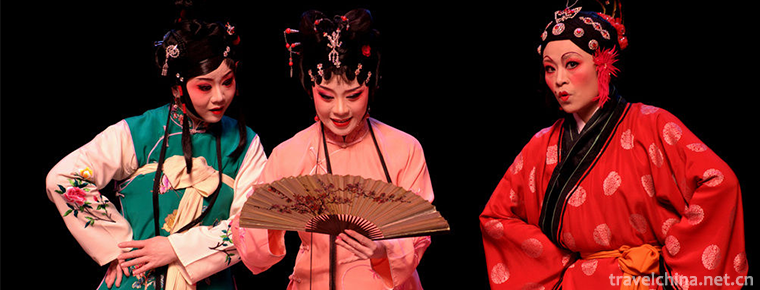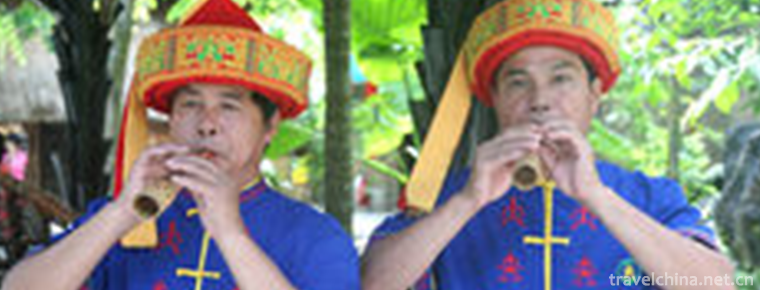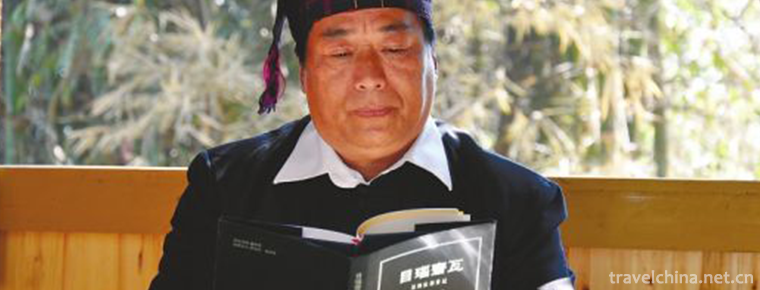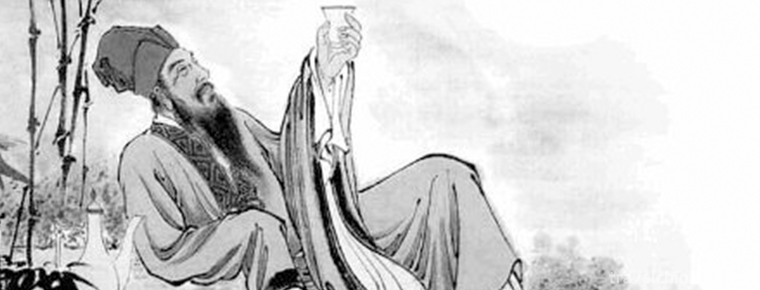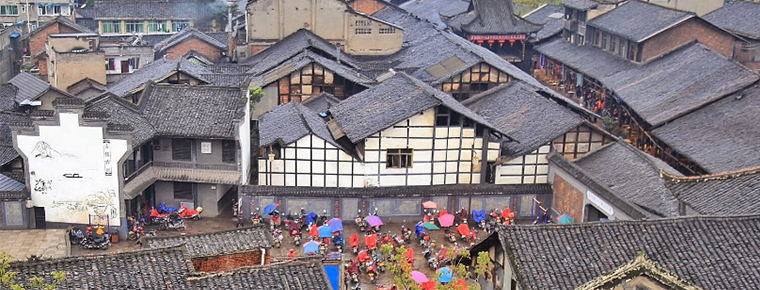Wenshui Tiaozi
Wenshui Tiaozi
Wenshui Biaozi is an ancient and unique traditional folk music art spread in Wenshui County, Shanxi Province. It is named for its special copper cymbals commonly known as "Biaozi" in performance and originated in Yue Village, Fengcheng Town, Shanxi Province. The local people are used to call it "Yue Village Biaozi". Wenshui Tiaozi originated from the local ancient ritual of praying for rain. It gradually combined with the people's living customs and became the honor music of greeting the gods and daily guests. When playing, it imitated the wind, rain, thunder and electricity in nature with musical instruments, which had strong artistry and ornamentality. Wenshui Banzi Music has participated in many national competitions and won many awards. It is known as "one of the best gongs and drums in the three Jin Dynasties" and has become a famous brand of traditional art in Wenshui County.
Wenshui Tiaozi was selected as the first national intangible cultural heritage catalogue.
historical origin
Wenshui Biaozi, a kind of ancient and unique folk music art, is spread in Wenshui and its surrounding areas in central Shanxi Province. It is named after the use of a special percussion instrument called "Biaozi" by local people. It also originated in Yue Village, Fengcheng Town, Wenshui County, Shanxi Province. The local people are used to call it "Yue Village Biao". Son".
Oral materials show that Hanzi in Yue Village was originally spread as a music for the local rain prayer ceremony. Because of the unique status of rain prayer ceremony in local people's production and life, on the one hand, with the rain prayer culture inherited from generation to generation, and the local people as sacrificial music, and maintain its solemnity as ritual music; on the other hand, gradually combined with the people's living habits, it became a shrine and daily guests. Music of honor.
Wenshui Biaozi is a unique form of struggle between ancestors and nature, and fate. It is a unique culture rooted in the loess. Because of the harsh natural living environment and climate conditions, life is often in a tragic situation of sheltered clothes and fruitless food. Ignorance and ignorance make them place their hopes for a good harvest on the ghosts of the underworld, and offering sacrifices to gods and praying for rain naturally becomes an activity for ancestors to hope for a better life and pursue national security. In ancient sacrificial activities, besides offering sacrifices, music and dance were also offered to delight the gods. Yuecun Haozi is the most important part of the rain prayer ceremony. Wenshui has a Mayi Xiangu Temple, dedicated to a goddess - Ren Qiaoqiao. Legend has it that dexterity is the reincarnation of the Dragon girl, who was born in a farmer's family name in Sangcun. She fled from her stepmother's abuse and resistance to her parents'arranged marriage and fled away on a hemp pole in the hemp field. She flew to the Lingquan Cave of Huangluling Mountain in Fenyang to cultivate herself into an immortal, which is known as "Mayi Xiangu". After becoming immortal, Xiangu Guangshi Ganlin benefits the people. Wenshui people want to invite Xiangu to return home. Inviting Xiangu to return home, we need to select 18 villages of folk art to form a team to welcome God. According to the records of Fenzhou Prefecture annals and temple inscriptions in 1771 A.D. (36th year of Qianlong in Qing Dynasty), Xiangu was born on July 26th of 627 (the first year of Zhenguan in Tang Dynasty). Whenever Xiangu's birthday or drought happened, Wenshui people would "Zhai Jie Yi Yi Yi Yi", gathering 18 villages'folk art works, and going to Lingquan Cave to "seek holy water and come with the sacred image on their shoulders". In each festival, because Yue Village is the main carrier of the local culture of offering sacrifices to rain, the ancient culture of offering rain and the folk activities of offering sacrifices to Mayi Xiangu are skillfully integrated. According to the records of Wenshui County in the late Qing Dynasty, Wenshui people, who suffered from the worst drought in a century from April to August in 1545 (the twenty-fourth year of Jiajing in Ming Dynasty), suffered from dry crops, barren land and long drought and looked forward to rain. In order to get rid of this situation, they organized large-scale organizations in 18 villages throughout the county on the birthday of Ma Yi Xiangu on July 26 of the lunar calendar. The ritual of offering sacrifices and praying for rain with high specifications is sponsored by the county magistrate himself. At that time, the ceremony of offering sacrifices to Mayi Xiangu was unprecedented grandeur. Wenshui Tiaozi, as a traditional honor guard for offering sacrifices and praying for rain, was treated warmly by the local people and stole the limelight. Xiangu Guangshi Ganlin benefits Sangzi. The people in his hometown build temple statues for him and worship them for generations.
artistic characteristics
The artistic feature of Wenshui Biaozi is that in the sound effect of playing, the thunder is expressed by hammering the big drum and the thunder is expressed by lightly hitting the surface of the drum with the hammer. The "scratch" sound of cymbals simulates the echo effect of wind, and the "throw" sound of cymbals simulates the visual effect of lightning. After holding hands tightly, it makes a rapid "tapping" sound, like a downpour; the tapping sound of small cymbals from above, like a dripping rain; the tapping sound of both hands around; the tapping sound of small cymbals. It sounds like rain in the wind. When playing, the performers button cymbal bowls in both hands to control the residual tones so as not to diffuse them, making them produce a crisp, bright and pleasant sound like a rain banana.
The musical instruments used in Wenshui Tanzi's musical performance are cymbals, cymbals, cymbals and drums (Leigong drums). The main musical instrument is the cymbals, which have unique shape and pronunciation. The cymbals are made of copper hammer. The cymbal bowls are large and small along the cymbals. The cymbal surface diameter is about 20 centimeters, the cymbal bowl diameter is about 16 centimeters, and the weight is about 0.8 kilograms. Because of its different combination of instruments, unique percussion method and playing posture, it presents a unique sound effect.
In addition to the traditional skills such as scraping, wrong striking, wiping and smoothing, the performance techniques include several special skills such as grinding, rolling, scraping, half-stroke, sidestroke, counter-attack and throwing. Throwing is especially amazing - cymbals are thrown together from time to time to show lightning, and then accurately pick up the hand, no matter how high they are thrown, the falling rhythm is always not disorderly, thrilling and exciting. Rich playing techniques not only vividly show natural phenomena such as wind, rain, thunder and lightning, but also vividly show people's helplessness, desire, expectation and joy of the inner world.
Wenshui Banzi is a kind of folk percussion music with multi-stage body divertimentary structure. The whole set of gongs and drums can be divided into three sections, including seven drum points, forming a precise, complete and unified folk art treasure. Later generations have been digging and sorting out, including "thunder and lightning", "clouds rolling", "Pu Jiang Ganlin", "Happy Harvest" four movements, rich in artistic connotations.
With the beginning and transition of the movement, 120 players alternately form square array, circular array, group flower array, quadrangular array, diamond array, and interpolate the changes of Erlong Drama Pearl, Shuanglong Water Outlet and Jinlong Wagging Tail. These pictures are changeable, dazzling and refreshing. Tiaozi is a pair of handy dancing props, small and handy. In the course of performance, Danzi's dancing movements, such as misspelling, striding, splitting and jumping, boy worship Buddha and Danfeng Chaoyang, are adapted to his playing skills and show the rich connotation of the movement. The dancing posture is vigorous, free and easy, and the shape is relaxed and generous, which is pleasing to the eyes.
Inheritance value
Wenshui Tiaozi has a strong loess flavor, its style is bold and vigorous, rough and unrestrained, simple and heavy, is the epitome of the ancient culture of worship and praying for rain for the working people, inheriting the essence of the Chinese farming culture. Considering drum score, performance form, playing instruments, clothing, props and other aspects, Wenshui Biaozi is the product of five thousand years of Chinese civilization, which is a cultural symbol with strong loess flavor emerging from the mother body of Chinese farming culture. This form of folk art has a high historical value for the study of local sacrificial culture, folk culture and local customs, has a high academic value for the study of the root of the Yellow River civilization and the Chinese nation culture, and has a high reference value for the study of Chinese traditional music theory and music creation.
Inheritance
Wenshui Tiaozi is mainly inherited by family and apprenticeship, and is handed down from generation to generation in the form of oral and heart-to-heart instruction. Many music scores are not written down, and they are performed by a team of part-time folk artists. With the change of history, the function of Wenshui Biaozi has gradually changed, from the function of offering sacrifices and praying for rain at the time of its origin to the folk art and culture of the working people's Yingshen Competition Society.
Most of Wenshui Tiaozi's musical instruments and Tao are unique, and their production methods, materials and techniques are very exquisite. Cymbals are very rare in percussion instruments. After ten years of catastrophic destruction, they are rare and incomplete. Other instruments such as cymbals, cymbals and drums are also facing urgent rescue. At the same time, the organization of Wenshui Tiaozi's performance is loose management, most artists go out to work or change their professions to make a living; art innovation lacks professional support and motivation, and the art of Tiaozi is declining day by day.
After the founding of the People's Republic of China in 1949, Wenshui Biaozi was widely used and endowed with new connotations. It became a popular folk art form in the area. Its influence gradually expanded from Yue Village to the whole Wenshui County and became Wenshui Biaozi. After many years of recovery and arrangement, Wenshui Tiaozi music has participated in national competitions many times and won many awards. It is known as "one of the best gongs and drums in the three Jin Dynasties", and has become a famous brand of traditional art in Wenshui County.
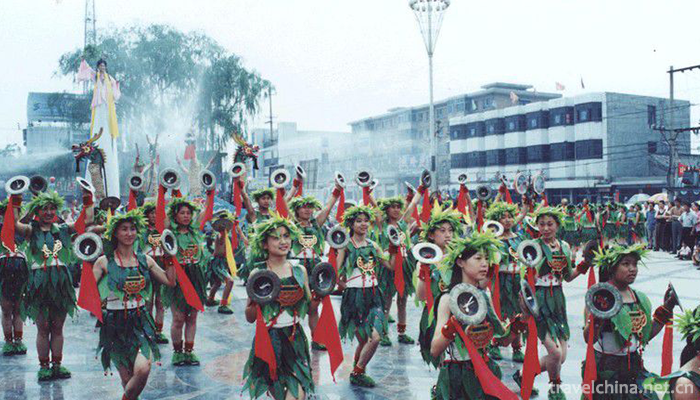
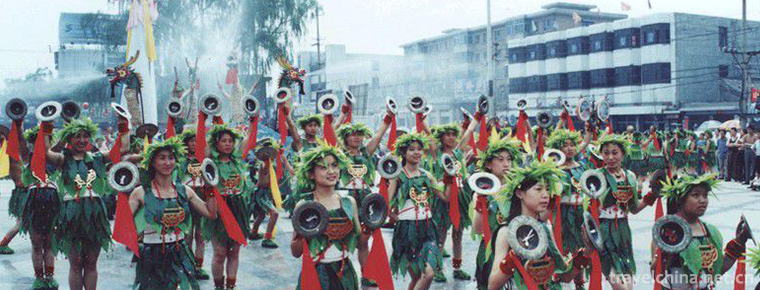
Wenshui Tiaozi
-
Chinese Elk Garden Scenic Spot
Jiangsu Dafeng Elk National Nature Reserve is located in the Yellow Sea coast, with a total area of 78,000 hectares, including 2668 hectares in the core area
Views: 173 Time 2018-12-06 -
Sun Yatsen Memorial Hall
Zhongshan Memorial Hall is located in Dongfeng Middle Road, Yuexiu District, Guangzhou City, Guangdong Province. It was built by the people of Guangzhou and overseas Chinese to commemorate Dr. Sun Yat
Views: 164 Time 2018-12-22 -
Linhai Qishi Scenic Area
Linhai Qishi Scenic Area is located in Tangwanghe District, Yichun City, Heilongjiang Province. Scenic area covers 190 square kilometers. It is a new eco-tourism area and National Geological Heritage
Views: 203 Time 2019-01-30 -
Avanti
Avanti, also translated by the Albanian side, (Uygur "Mr." means, Arabic: Juha or Nazar Ding), is a person active in Islamic nationalities from Morocco in the west to Xinjiang in China.
Views: 177 Time 2019-03-28 -
Liyuan Opera
Liyuan Opera is one of the traditional operas in Fujian Province. Liyuan Opera originated in Quanzhou in the Song and Yuan Dynasties. It is also called "the voice of Fujian and Zhejiang" and
Views: 204 Time 2019-05-12 -
Li Folk Songs
Folk songs play an important role in daily life. Almost all men, women and children can sing. Especially on festive days, singing is an indispensable recreational activity. In the daily production wor
Views: 334 Time 2019-05-12 -
Munaozaiwa
In May 2011, Munaozaiwa declared by Dehong Dai Jingpo Autonomous Prefecture of Yunnan Province was listed in the third batch of national intangible cultural heritage list with the approval of the Stat
Views: 130 Time 2019-06-06 -
Legend of Su Dongpo
The legend of Su Dongpo is a group of traditional folklore stories evolved from the story of Su Shi, a great writer in the Northern Song Dynasty.
Views: 172 Time 2019-06-16 -
Luocheng ancient town
Luocheng ancient town, known as "China's Noah Ark", is located in the northeast of Qianwei County, 60 kilometers away from Leshan City and 25 kilometers away from Qianwei county. There are seven ethnic groups, Han, Hui, Yi, man, Tibetan, Li and Miao.
Views: 106 Time 2020-10-15 -
Education in Panzhihua
By the end of 2018, Panzhihua had 2 ordinary colleges and universities, 56 ordinary secondary schools, 7 secondary professional schools, 60 primary schools and 194 kindergartens. There are 26617 students in Colleges and universities, 72372 students in secondary schools
Views: 340 Time 2020-12-14 -
Overview of Guangyuan
In 2019, the GDP of Guangyuan will reach 94.185 billion yuan, an increase of 7.5% over the previous year, which is the same as that of the whole province. Among them, the added value of the primary industry was 15.301 billion yuan, an increase
Views: 372 Time 2020-12-15


